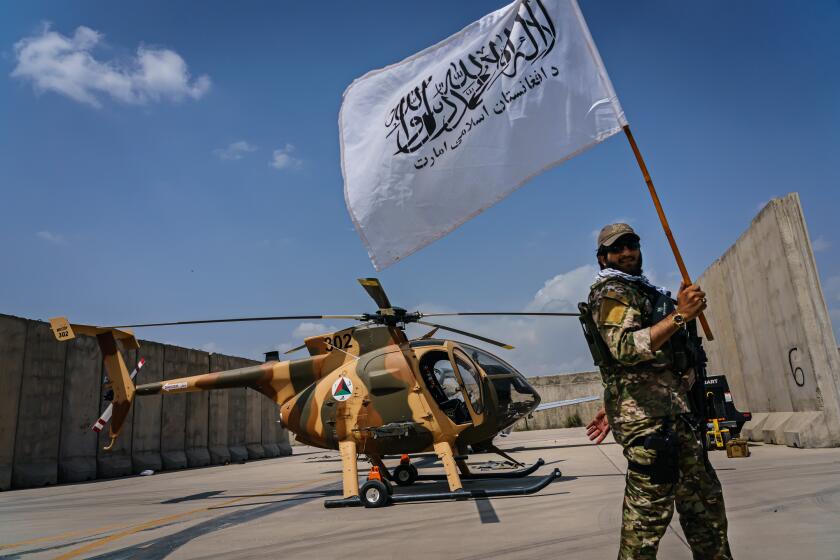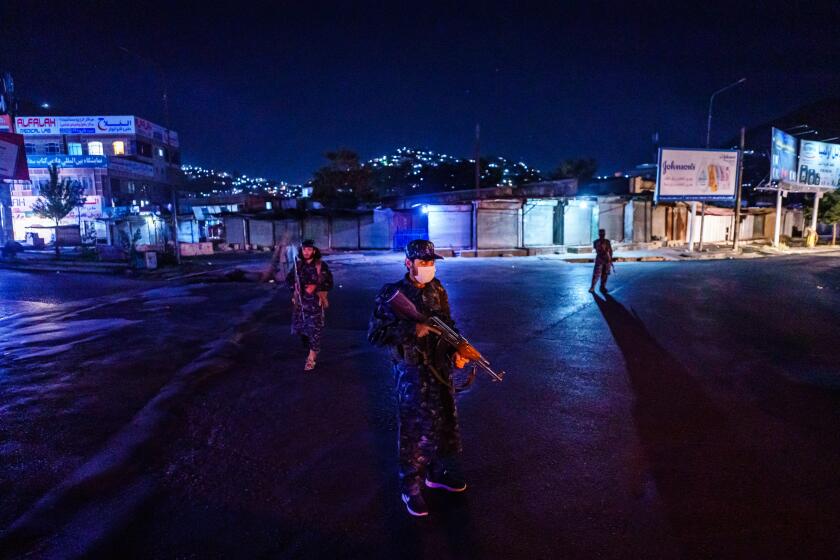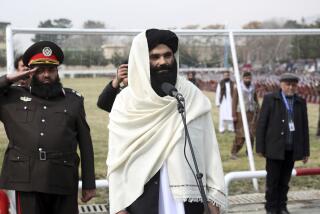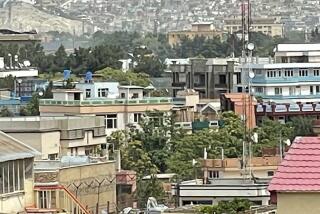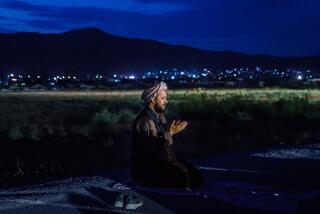Friction between the Taliban’s pragmatists and hard-liners intensifies
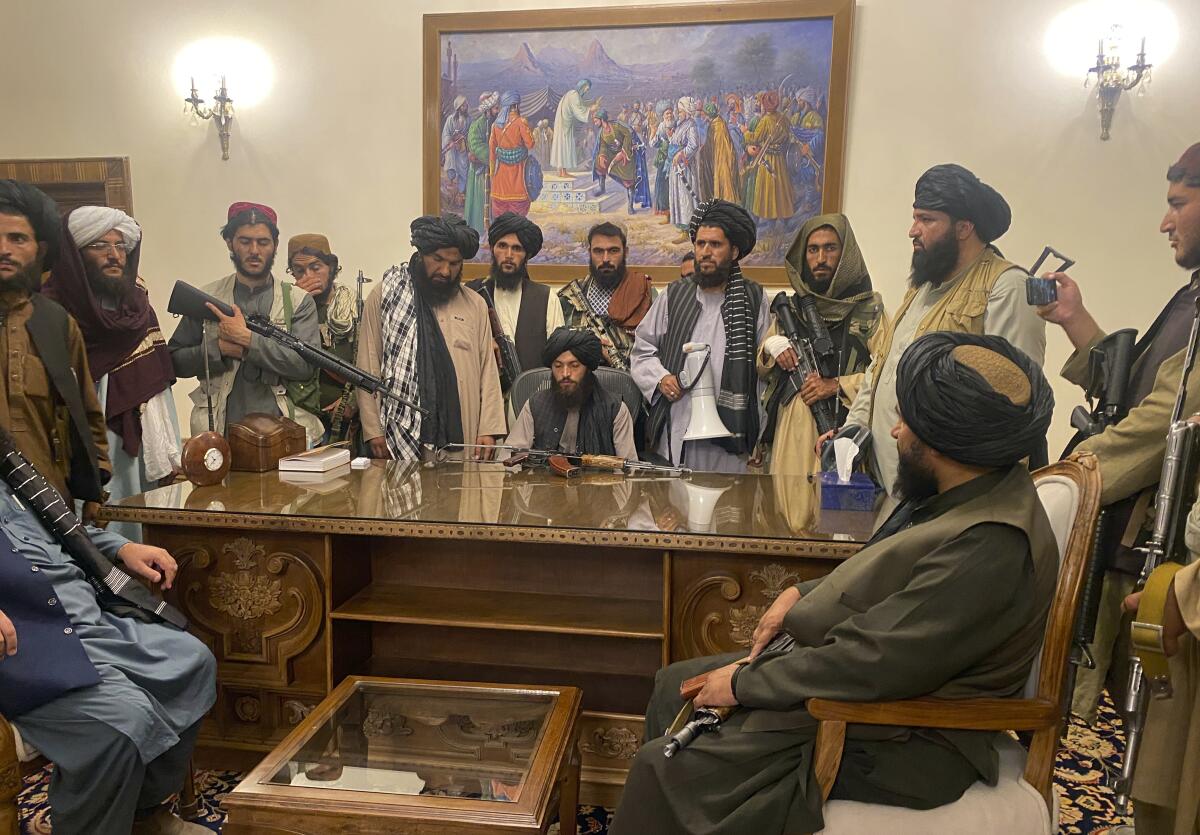
KABUL, Afghanistan — Friction between pragmatists and ideologues in the Taliban leadership has intensified since the formation last week of a hard-line Cabinet more in line with the group’s harsh rule in the 1990s than its recent promises of inclusiveness, two Afghans familiar with the power struggle said.
The wrangling has taken place behind the scenes, but rumors quickly began circulating about a recent violent confrontation between the two camps at the presidential palace, which even included claims that the leader of the pragmatic faction, Abdul Ghani Baradar, was killed.
The rumors reached such intensity that an audio recording and handwritten statement, both purportedly by Baradar himself, denied that he was dead. On Wednesday, he appeared in an interview with the country’s national TV.
“I was traveling from Kabul so had no access to media in order to reject this news,” Baradar said of the rumor.
Baradar served as the chief negotiator during talks between the Taliban and the U.S. that paved the way for the Western troop withdrawal from Afghanistan, which was completed in late August, two weeks after the Taliban overran Kabul, the capital.
Shortly after the Kabul takeover, Baradar was the first senior Taliban official to hold out the possibility of a government that would include women and ethnic minorities, but such hopes were dashed with the formation of an all-male, all-Taliban lineup last week.
In Afghanistan, the Biden administration must figure out how to deal diplomatically and politically with what will be a Taliban-led government.
In a further sign that the hard-liners had prevailed, the white Taliban flag was raised over the presidential palace, replacing the Afghan national flag.
A Taliban official said the leadership still hasn’t made a final decision on the flag, with many leaning toward eventually flying both banners side by side. He spoke on condition of anonymity because he was not allowed to discuss internal deliberations with the media.
The two Afghans familiar with the power struggle also spoke on condition of anonymity to protect the confidentiality of those who shared their discontent over the Cabinet lineup. They said one Cabinet minister toyed with refusing his post, angered by the all-Taliban government that shunned the country’s ethnic and religious minorities.
Taliban spokesman Zabihullah Mujahid has denied rifts in the leadership. On Tuesday, the Taliban’s foreign minister, Amir Khan Mutaqi, dismissed such reports as “propaganda.”
Since taking power, Taliban officials have sprouted in all major Afghan ministries, embedding themselves in the bureaucracy they have inherited.
Baradar had been noticeably absent from key functions. For instance, he was not at the presidential palace earlier this week to receive the deputy prime minister of Qatar, Sheikh Mohammad bin Abdur Rahman Thani, who is also foreign minister and was making the highest-level diplomatic visit since the Taliban takeover. Baradar’s absence was jarring because Qatar had hosted him for years as head of the Taliban’s political office in the Qatari capital of Doha.
In the interview shown Wednesday, Baradar said he did not participate in the meeting because he was not aware of the visit. “I had already left and was not able to return,” Baradar said.
Several officials and Afghans who are familiar and in contact with Baradar told the Associated Press earlier that he was in the southwestern provincial capital of Kandahar for a meeting with Taliban leader Haibatullah Akhunzada. Another Taliban figure said Baradar was visiting family he had not seen during 20 years of war.
Analysts say the friction may not amount to a serious threat to the Taliban — for now.
Women in Afghanistan can continue to study in universities, but classrooms will be gender-segregated and Islamic dress is compulsory.
“We’ve seen over the years that, despite disputes, the Taliban largely remains a cohesive institution and that major decisions don’t get serious pushback after the fact,” said Michael Kugelman, Asia program deputy director at the Washington-based Wilson Center.
“I think the current internal dissension can be managed,” he said. “Still, the Taliban will be under a lot of pressure as it tries to consolidate its power, gain legitimacy and address major policy challenges. If these efforts fail, a stressed organization could well see more and increasingly serious infighting.”
However, Taliban divisions today will be more difficult to resolve without the heavy-handed rule of the group’s founder, the late Mullah Omar, who demanded unquestioned loyalty.
More to Read
Sign up for Essential California
The most important California stories and recommendations in your inbox every morning.
You may occasionally receive promotional content from the Los Angeles Times.
